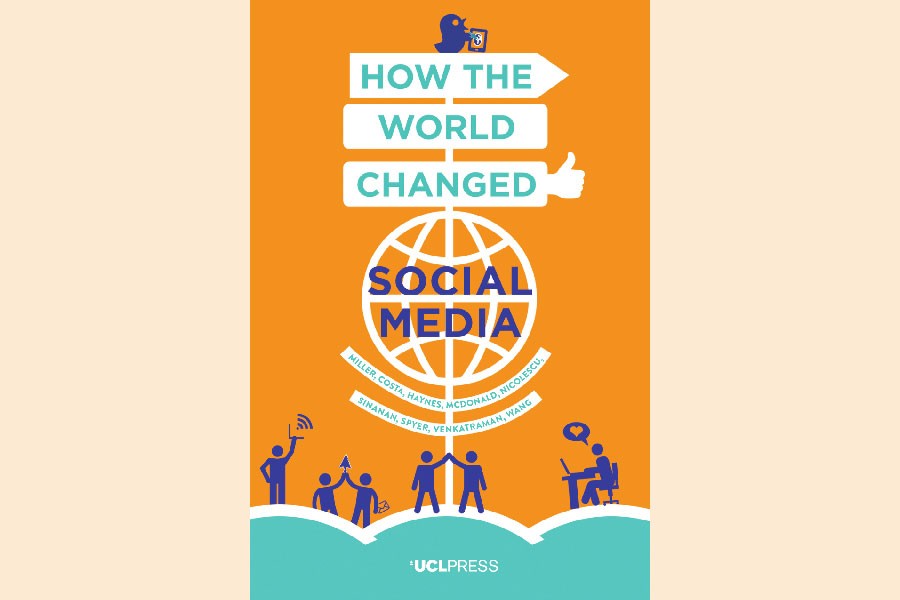Social media is all around us and has become a part of our daily lives. But, why do we post on social media? What is the consequence of the increased emphasis on visual communication? Are we becoming more individual or more social? Is it true that we are replacing face-to-face relationships with on-screen life? Are we becoming more narcissistic with the rise of selfies? Why is public social media so conservative? Is social media creating or suppressing political action, destroying privacy or becoming the only way to sell something? And are these claims equally true for a factory worker in China and an IT professional in India? With these questions in mind, nine anthropologists each spent 15 months living in communities in Brazil, Britain, Chile, China (one rural and one industrial site), Turkey, India, Italy and Trinidad and Tobago. Led by Professor Daniel Miller of University College, London, they studied not only platforms but the content of social media to understand both why we post and the consequences of social media on our lives. Based on their findings, University College London published a unique book named How the World Changed Social Media.
Authored by nine anthropologists - Daniel Miller, Elisabetta Costa, Nell Haynes, Tom McDonald, Razvan Nicolescu, Jolynna Sinanan; Juliano Spyer, Shriram Venkatraman, and Xinyuan Wang - the book offers a comparative analysis summarising the results of the study and explores the impact of social media on politics and gender, education and commerce. Supported by an introduction to the academic framework and theoretical terms that help to account for the findings, the book argues that the only way to appreciate and understand something as intimate and ubiquitous as social media is to be immersed in the lives of the people who post. Only then can we discover how people all around the world have already transformed social media in such unexpected ways and assess the consequences.
The book attempts to explore 10 key topics: 1) Education and young people; 2) Work and commerce; 3) Online and offline relationships; 4) Gender; 5) Inequality; 6) Politics; 7) Visual images; 8) Individualism; 9) Does social media make us happier?; and 10) The future.
There is considerable public anxiety that social media distracts from education and reduces the social skills of young people - despite an exemplary body of prior research that rejects any such simple conclusions.
In several of their field sites the authors observe that low-income families often see social media activity as a useful skill, enhancing literacy and providing a route to alternative, informal channels of education. By contrast higher-income families see it more as a threat to formal education. In the case of 'Work and Commerce' the primary anxieties focus upon in popular journalism include surveillance by companies, new forms of commodification and social media as a distraction. Although social media platforms are themselves owned by private companies, social media does not necessarily favour the interests of commerce.
In most cases of 'Online and Offline Relationships' the authors' evidence is that online interactions are in fact another aspect of the same offline relationships. Rather than representing an increase in mediation, social media is useful in revealing the mediated nature of prior communication and sociality, including face to face communication. In some societies, such as Trinidad, the enhanced visibility of people through social media leads users to see this representation as potentially more truthful than offline observations of those around them. However, in some societies, such as Brazilian and Trinidadian sites, social media fosters a tendency to befriend the friends of one's friends or relatives. Social media enhances our ability to see how gender differences and stereotypes are visualised and portrayed. The authors' field site in southeast Turkey is one of several suggesting that public-facing social media, such as Facebook, may enhance the appearance of conservatism or become an ultra-conservative place. Conservative representations of gender are also fostered in south India, rural China and Chilean sites. At the same time private-facing social media, such as WhatsApp, has had a liberalising effect on the lives of young women in the same Muslim southeast Turkish site; it has created unprecedented possibilities for cross- gender contact and the fulfilment of romantic aspirations.
The comparative evidence presented in this book indicates how important it may be to recognise that while social media and smart-phones can create a greater degree of equality in capacity for communication and socialising within highly unequal societies, this might at the same time have no impact whatsoever on offline inequality.
A major effect of social media is that human communication has become more visual at the expense of oral and textual modes. Generalisations about new visual forms such as the 'selfie' are often inaccurate. There are many varieties of the 'selfie' which are often used to express group sentiment rather than individual narcissism.
There is an anxiety that social media, along with almost every other technological innovation, will foster individualism at the expense of social life. The authors' evidence, however, is that while earlier forms of the internet favoured ego- based networking, social media represents a partial return to prior group socialisation, such as the family, in many sites.
It is obviously not easy to predict the future for something as dynamic as social media. The only confident prediction is that much of our future forecasting will turn out to be wrong. The book How the World Changed Social Media actually challenges the idea that the adoption of social media follows a single and predictable trajectory. It also refutes the idea that social media are making humans any less human. Users of social media are, in Dr Miller's words, "merely attaining something that was latent in human beings".
S.M. Rayhanul Islam is an independent researcher.


